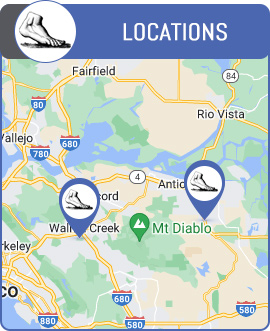What Causes a Ganglion Cyst on Your Foot and Ankle?
Ganglion cyst is a noncancerous lump that commonly forms along the tendons or joints of the feet. Filled with jelly-like fluid, these cysts can vary in size and may develop due to tissue bulging around a joint or tendon, often following irritation or injury. While some ganglion cysts go away on their own, others may need to be removed, especially if they are causing pain or hindering movement. Visit Dr. John W. Scivally, DPM, and Robin K. Lie, DPM at Bay Area Foot and Ankle Associates. Contact us for more information or schedule an appointment online. We have convenient locations in Walnut Creek, CA, and Brentwood, CA.
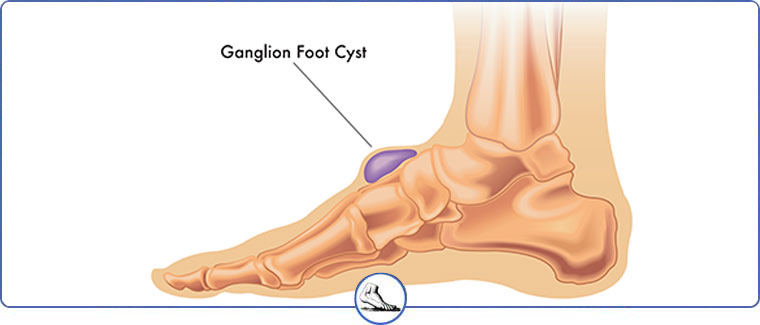
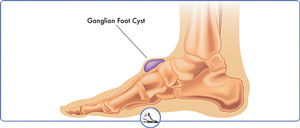
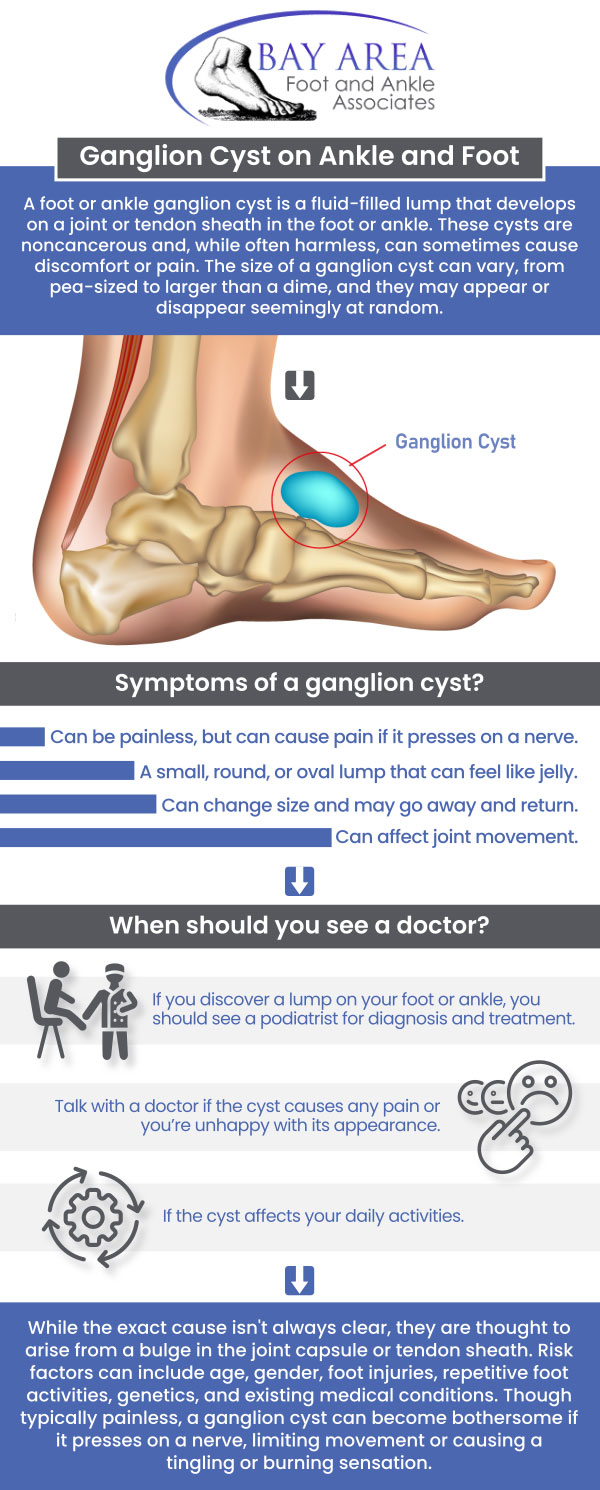
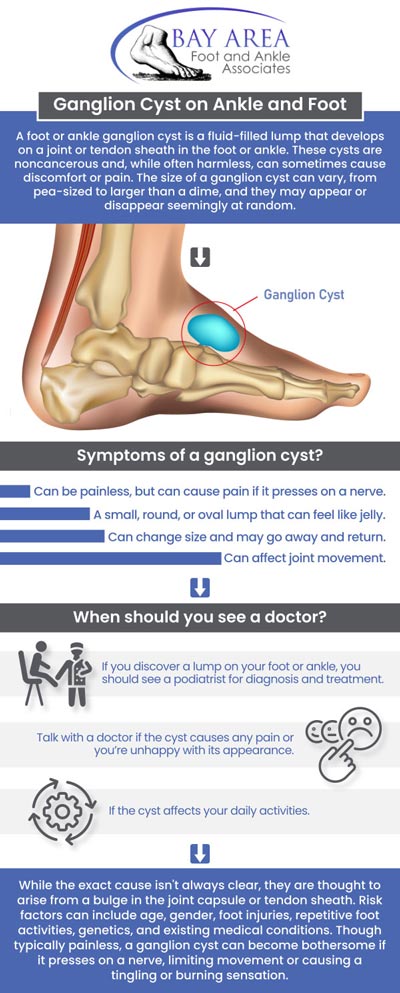
Table of Contents:
Why do you get ganglion cysts on your feet?
How do I get rid of a ganglion cyst on my foot?
What is the root cause of ganglion cyst?
Will the ganglion cyst on the ankle go away on its own?
Currently, it is unknown what causes ganglion cysts. It has been suggested that some kind of soft tissue trauma can cause ganglion cysts, which are actually a collection of several smaller cysts. There is also the possibility that a flaw in a joint allows connective tissue to bulge, thus creating a cyst. An individual with a ganglion cyst may not be able to point to any type of injury before the cyst appeared.
It is believed they may form after trauma or repeated irritation that results in the displacement of surrounding tissue. Ankles and feet are usually affected by this displacement of tissue, creating a lump. It is also possible to develop ganglion cysts if you suffer from arthritis and bone spurs. There are several other associated risk factors.
Anyone can develop ganglion cysts, but they are most common in women between 20 and 40 years old. A person who suffers from wear-and-tear arthritis in their joints is more likely to develop ganglion cysts near the affected joints. An injury to a joint or tendon may lead to the development of ganglion cysts in the future.
In the absence of pain or discomfort, a ganglion cyst may simply be monitored by the doctor to see if it changes. In most cases, a doctor will only treat a cyst if it is causing pain or mobility problems. It is possible that they will use a variety of treatments in this situation. Treatment options include aspiration and injection as well as surgery.
The process of aspiration involves draining the cyst of its fluid. Once the cyst has been cleared, steroid medication may be injected into it by the doctor. It is possible that more than one session will be necessary, and the cyst may eventually recur. Doctors may recommend surgery to remove the cyst and part of the joint capsule or tendon sheath if aspiration and injection do not work. It is possible, however, for the ganglion cyst to return even after surgery.
Noncancerous lumps called ganglion cysts appear most commonly on the wrists or hands. In addition to the ankles and feet, they can also occur in the hands. There is a jelly-like fluid inside ganglion cysts that are usually round or oval.
A small ganglion cyst can be as small as a pea, while a larger cyst can be as large as an inch (2.5 centimeters). When ganglion cysts press on nearby nerves, they can cause pain. They can sometimes interfere with joint movement due to their location.
Your doctor may recommend draining the cyst with a needle if your ganglion cyst is causing you problems. There is also the option of surgically removing the cyst. In any case, if you don’t have any symptoms, there is no need for treatment. Most cysts disappear on their own after a few weeks or months.
Ganglion cysts are not known to have a specific cause. These growths arise from bulging tissues around joints and tendons. Similar to that found around joints or around tendons, there is a thick lubricating fluid inside the cyst.
There is evidence that 58% of ganglion cysts will disappear on their own without treatment. It may take years for the cysts to disappear, and they may return – the recurrence rate is approximately 15–20%. There are measures you can take at home to ease irritation and help manage the cyst.
When a person suffers from a ganglion cyst, they can try putting ice in a cloth and applying it to the cyst, which will also reduce inflammation, taking over-the-counter pain relievers, and limiting their movements while they wait for a doctor’s appointment to ease the pain. Shoes that do not irritate the area should be worn if possible. It may also be helpful to add padding to prevent rubbing and pressure.
For ganglion cysts that do not go away on their own or cause pain and discomfort, treatment is available at Bay Area Foot and Ankle Associates. For more information, contact us or request an appointment online. We serve patients from Walnut Creek CA, Brentwood CA, Concord CA, Pleasant Hill CA, Pittsburg CA, Alamo CA, Antioch CA, Danville CA, and Oakley CA.

Additional Services You May Need
▸Custom Foot Orthotics
▸Ingrown Toenail Specialist
▸Traditional Podiatry Care
▸Foot and Ankle Surgery Clinic
▸Bunion Doctor
▸Corns and Calluses
▸Foot Arthritis and Joint
▸Warts
▸Video Gait Analysis
▸Athletic Taping
▸Pediatric Foot Specialist
▸Gait Abnormalities
▸Foot Dermatologist
▸Foot Deformities
▸Chronic Foot Injury
▸Diabetic Foot Specialist
▸Acute Foot Injuries
▸Podiatric Sports Services
▸Plantar Fasciitis Specialists

